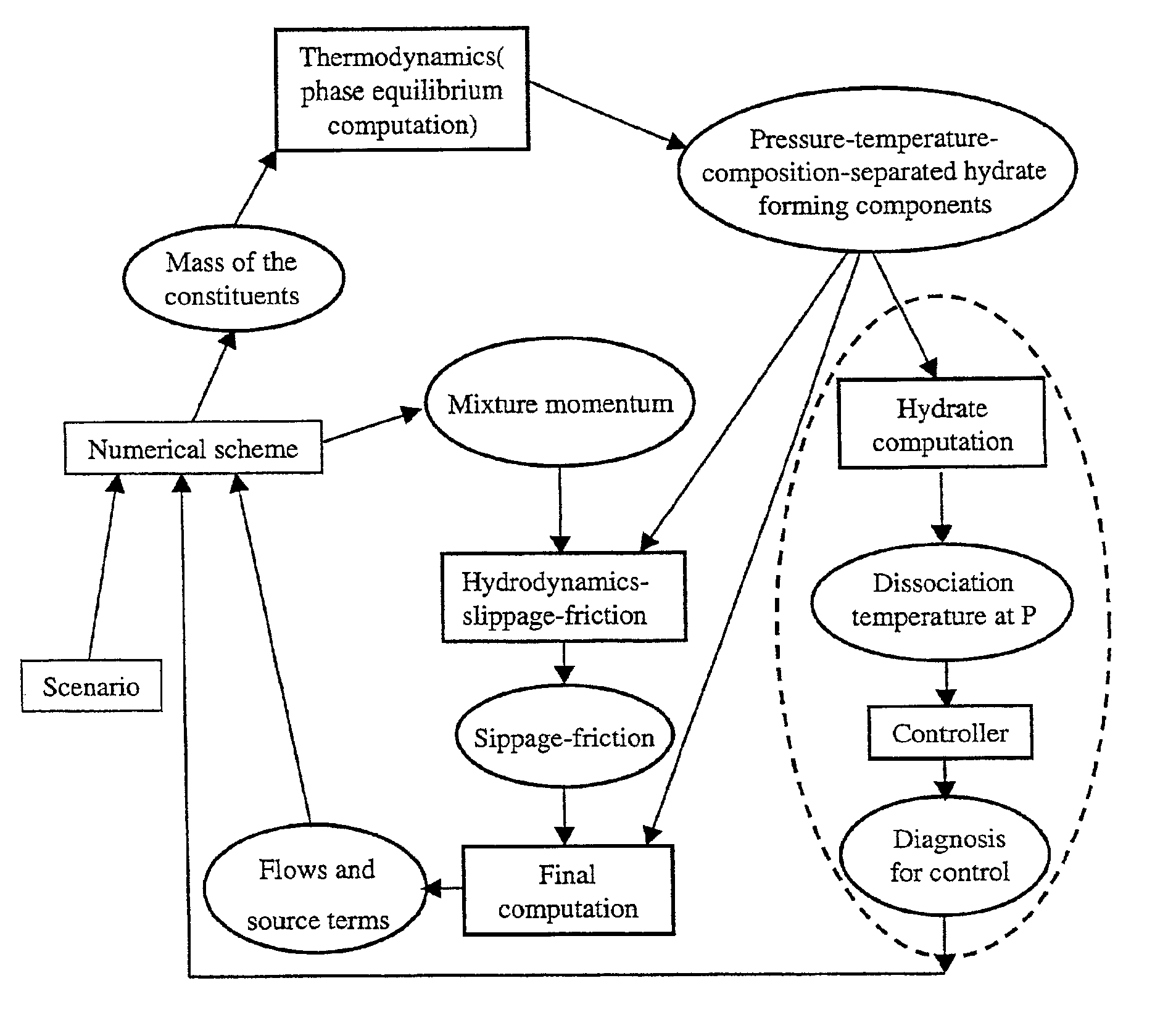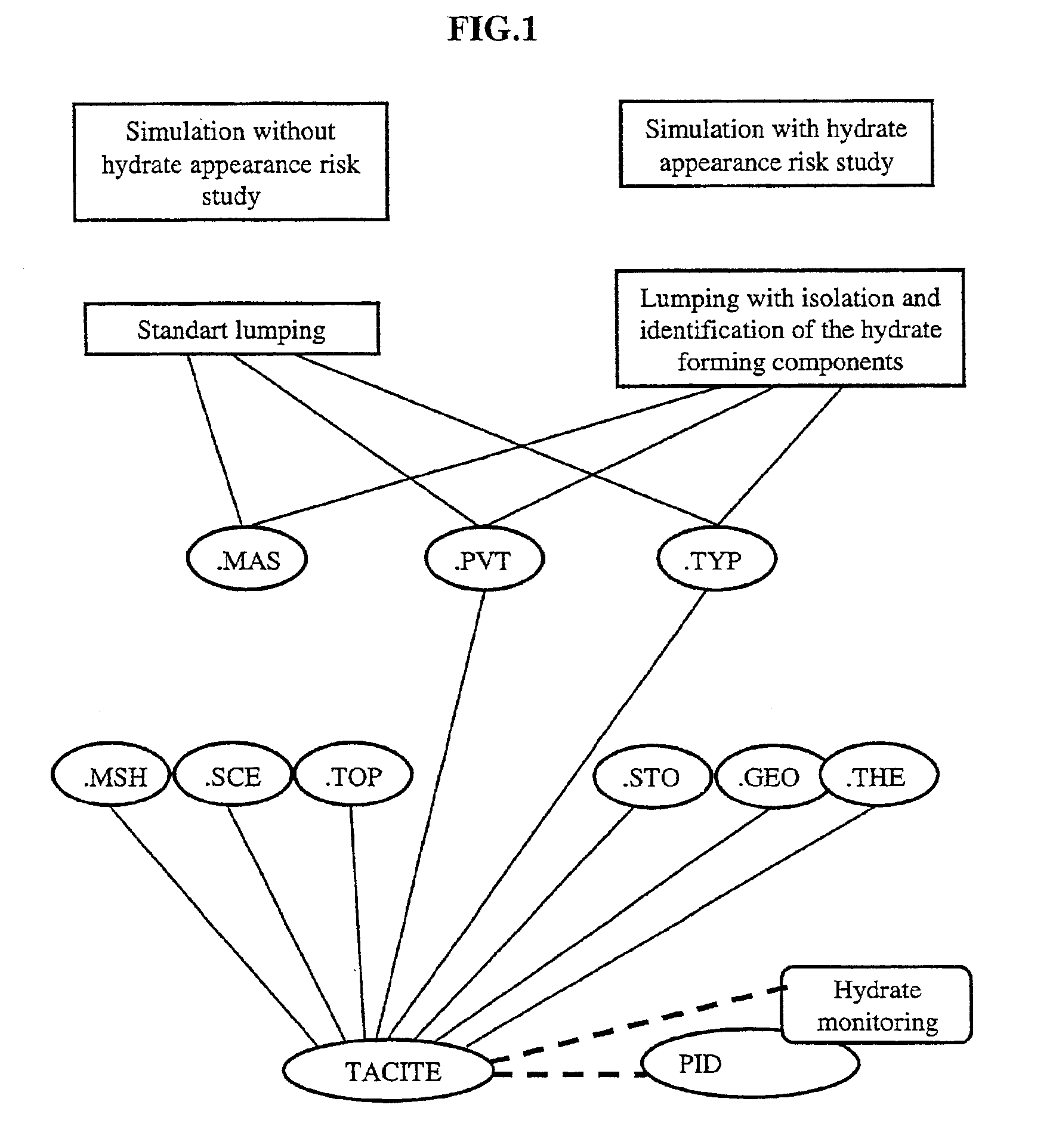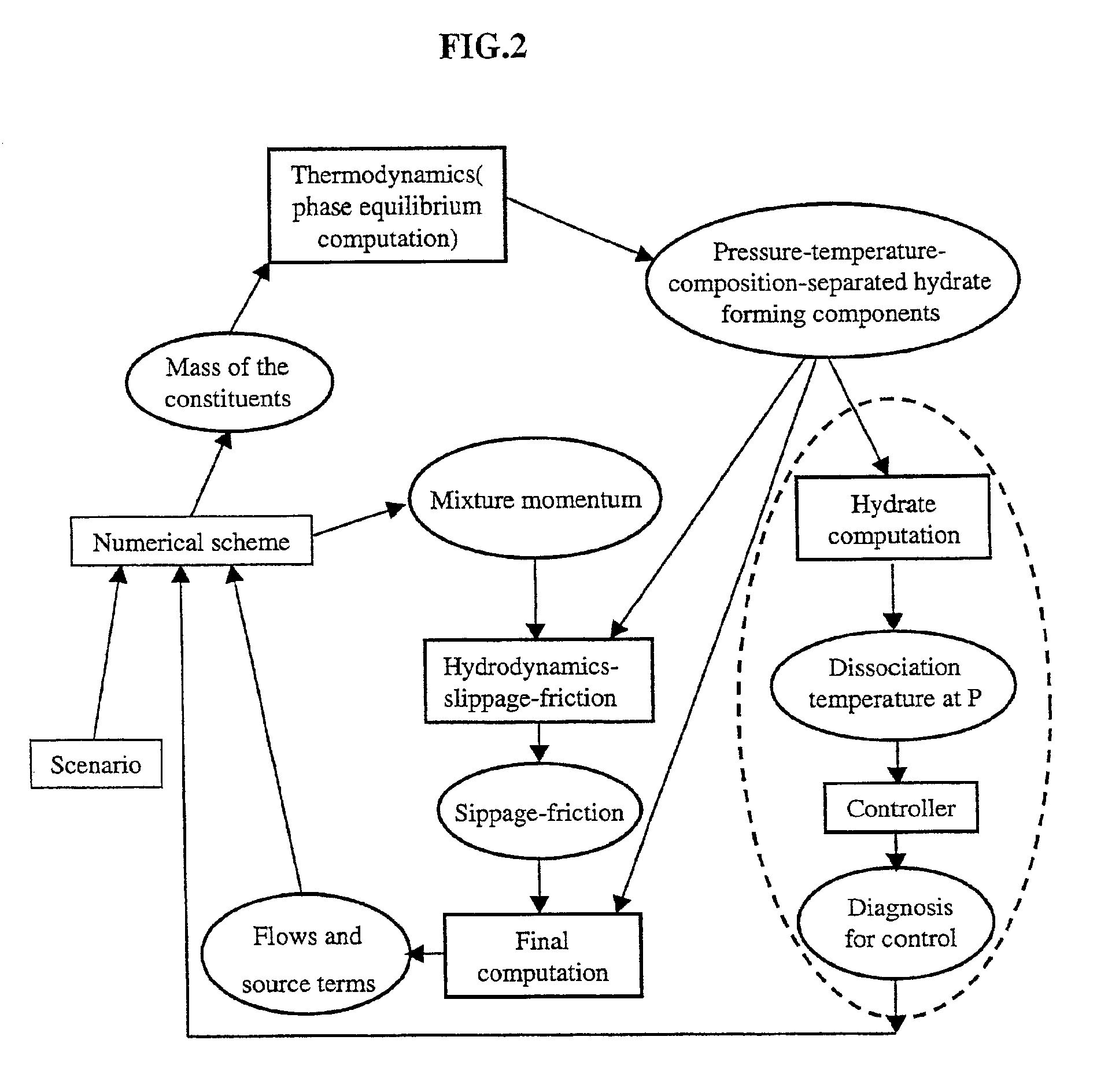Method for detecting and controlling hydrate formation at any point of a pipe carrying multiphase petroleum fluids
a technology of petroleum fluids and hydrates, which is applied in the direction of computer control, digital computer details, and ratio control, etc., can solve the problems of increasing the risk of hydrate formation, and causing costly production problems
- Summary
- Abstract
- Description
- Claims
- Application Information
AI Technical Summary
Problems solved by technology
Method used
Image
Examples
Embodiment Construction
Presentation of the Thermodynamic Module
Structure of Hydrates
Hydrates are solid compounds consisting of hydrocarbon molecules (methane, ethane, carbon dioxide, etc.) trapped at high pressure and low temperature in approximately spherical cages formed by a three-dimensional crystal lattice of water molecules. This structure is metastable in the absence of hydrocarbons and requires a minimum filling ratio to ensure its stabilization. Unlike the crystal lattice of ice, the crystal lattice of hydrates can remain stable above 0° C.
X-ray diffraction measurements carried out in the fifties have highlighted two crystal structures of hydrates according to the nature of the insertion molecules present. In both cases, these structures are cubic structures organized in networks of small and large cavities. The table hereafter shows the possible occupation of the various cavities according to the nature of the hydrate forming molecules involved (+: possible occupation of the cavity by the molecu...
PUM
| Property | Measurement | Unit |
|---|---|---|
| compositional thermodynamic module | aaaaa | aaaaa |
| phase | aaaaa | aaaaa |
| momentum conservation equations | aaaaa | aaaaa |
Abstract
Description
Claims
Application Information
 Login to View More
Login to View More - R&D
- Intellectual Property
- Life Sciences
- Materials
- Tech Scout
- Unparalleled Data Quality
- Higher Quality Content
- 60% Fewer Hallucinations
Browse by: Latest US Patents, China's latest patents, Technical Efficacy Thesaurus, Application Domain, Technology Topic, Popular Technical Reports.
© 2025 PatSnap. All rights reserved.Legal|Privacy policy|Modern Slavery Act Transparency Statement|Sitemap|About US| Contact US: help@patsnap.com



